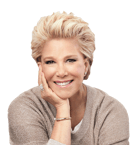Breast Cancer In Men

When we talk about breast cancer, we almost always relate it to women. However, even though the numbers are small, men too can be at risk for, and diagnosed with, the disease. This year 2,360 men are expected to be diagnosed and although that number accounts for less than 1% of all breast cancers, there are men and families who will be affected.
But because it’s so rare, it is difficult to really understand male breast cancer cases. However, when case studies from many small groups are combined, we can learn a lot.
So, what are the facts?
We all have breast tissue – boys, girls, men women – we all have it. For females, certain hormones stimulate the growth of breast tissue during puberty and men don’t normally make much of the hormones. As a result their breast tissue generally remains small and flat.
RISK FACTORS
- Growing Older – The same goes for women. Risk increases with age. For men, the average age of diagnosis is 68.
- High estrogen levels – Breast cell growth is stimulated by the presence of estrogen. Men can have high estrogen levels for the following reasons:
- Taking hormonal medicines
- Being overweight
- Heavy alcohol use – limits the liver’s ability to regulate blood estrogen levels
- Liver disease – lower levels of androgens (male hormones) and higher level of estrogen (female hormones)
- Klinefelter Syndrome – This is a condition at birth that affects 1 in 1,000 men.
- Symptoms include: having longer legs, higher voice, thinner beard than average, smaller than normal testicles, and being infertile (unable to produce sperm)
- Strong family history of breast cancer or genetic alterations (ie BRCA 1 or BRCA 2), particularly if other men in the family have had it.
- Radiation exposure – Exposure to the chest before age 30, particularly during adolescence, may increase risk.
- Learn more about risk factors here.
Since men are not routinely screened, their cancer tends to be more advanced than women at the time of detection. Research has shown that the time between first symptoms and diagnosis is 19 months – that’s a very long time! There are symptoms that men should pay attention to, especially if they are at higher risk. Seek care from your physician should you develop any of the following.
SYMPTOMS:
- A lump felt in the breast
- Nipple pain
- Inverted nipple
- Nipple discharge (clear or bloody)
- Sores on the nipple and areola
- Enlarged lymph nodes under the arm
- IMPORTANT: The enlargement of both breast (not just one side) is usually NOT cancer – it’s actually gynecomastia (enlargement of breast tissue in males).
- Learn more about symptoms here.
SCREENING METHODS
- Mammogram
- Ultrasound
- Nipple discharge examination: fluid may be collected and studied under microscope to check for cancer cells
- Biopsy
TREATMENTS:
- Surgery
- Lymph node surgery
- Radiation
- Hormone therapies - Most breast cancers in men are hormone-receptor positive, having either estrogen or progesterone receptors present in the cancer. The same kind of hormone therapies that work in women also work in men.
- To learn more about treatments here.
Early diagnosis can make a life-saving difference and with more awareness men will learn that, just like women, they need to see their doctor if they detect any persistent changes to their breasts.
Learn more about breast cancer in men at: www.breastcancer.org

